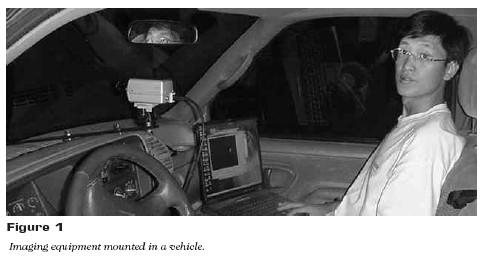This project developed and tested a prototype digital video image analysis system (Figure 1) to measure highway sign retroreflectivity. A literature review was conducted to obtain additional relevant information on highway sign retroreflectivity. The image processing hardware was procured and checked. An image-processing algorithm to perform real time analysis was developed. Signs were obtained from the Missouri DOT to calibrate the system. An outdoor measuring range with interchangeable sign mounted on a signpost was set up for experimental development. Following laboratory and outdoor evaluations, a prototype system to measure highway sign reflectivity was developed and tested under highway conditions. The results show the feasibility of developing a mobile vision-based system to classify and measure the visibility of road signs. The results also showed a rather poor correlation between retroreflectivity and visibility. Retroreflectivity was found to be a poor predictor of the visibility of white, yellow and to a lesser extent orange signs. It is, however, a relatively good predictor of the visibility of red, and to a lesser extent of green and blue signs. Brown signs were found to be of low retroreflectivity and visibility. The method developed in this project is the closest possible analog to what the eye sees when looking at signs under the normal illumination provided by the headlights. The method should be used at night and may be limited to use with high beams. The final report is available from the National Technical Information Service (NTIS # PB2003-102868).

The final report for this IDEA project can be found at:
https://onlinepubs.trb.org/onlinepubs/archive/studies/idea/finalreports/highway/NCHRP075_Final_Report.pdf